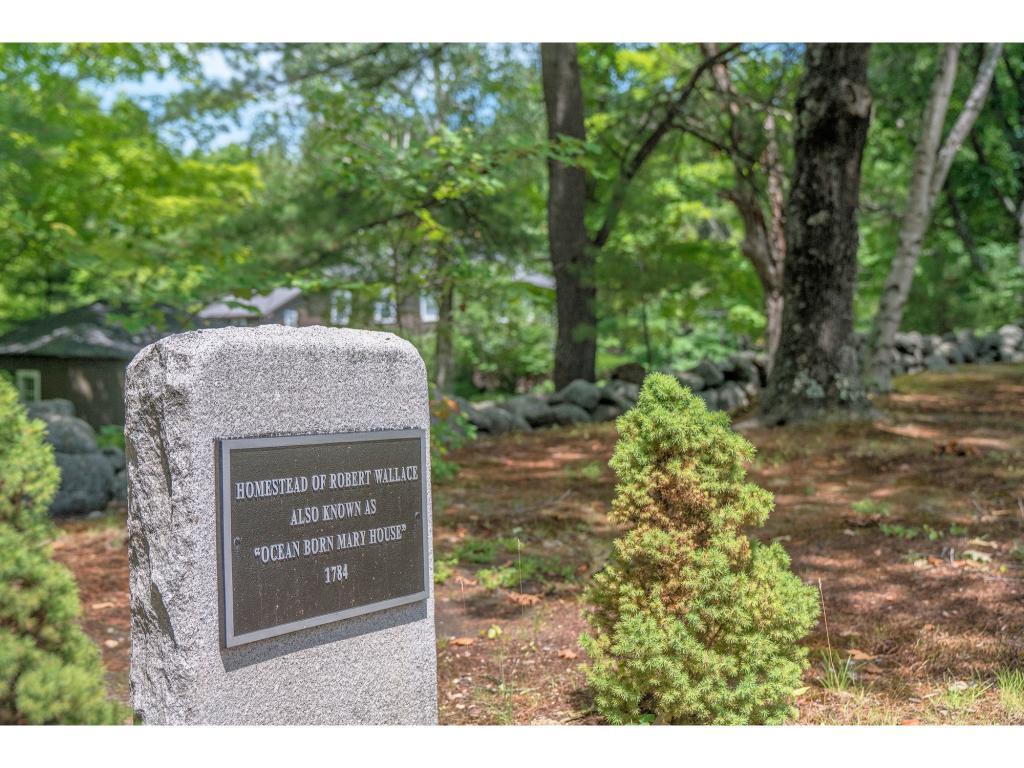Ocean-Born Mary-A New England Folktale

The story of Ocean Born Mary is a spectacular tale that has been circulating for decades; a baby born at sea, it was told that her birth pulled on the heartstrings of the pirate who captured her ship, ultimately leading him to spare the lives of the passengers onboard. The narrative involves a lot of mystery and excitement, but over time, it has been discredited. So, if it’s fiction, what is the real story? What we do know is that she is a real person and that she lived most of her life in New Hampshire. But the story doesn’t end there…
She was born in July of 1720, to Scottish-Irish immigrants James and Elizabeth Fulton, who were on a ship to New England to start a new life. While there is the story about the pirates invading the ship and threatening to kill the passengers on board, we’ll never know if that is really fact as most pirates preferred to capture their loot with as little violence as possible. The rest of the story is that the pirate captain asked her parents to name the girl Mary after his mother, but depending on who tells you this tale, it could have been the name of a girlfriend too. The Fultons did name their daughter Mary, and it has been said that the pirate presented them with a length of green silk to be made into a dress for the child’s wedding day while sparing their lives.
Mary’s father died not long after arriving in Boston, and she and her mother moved Londonderry, NH. She eventually got married (she did wear green silk to her wedding) and had five children with James Wallace. Mary spent the last sixteen years of her life living with one of her sons in Henniker, NH, where she passed away in 1814 at the age of 94. It was after her death that the story of her life turned into tales of hauntings and legends.
In 1917, a Wisconsin man by the name of Louis Roy came to Henniker looking for a home, where he found and moved into one of the homes of Mary’s sons. As time went on, he started spinning outlandish myths of romance and fairy tales, and that’s when the facts of her life became jumbled with fiction.

Roy started to allow tours of his home, where paying visitors would listen to stories about how Mary lived in the house and her love affair with the pirate that spared her life. He claimed that there was pirates’ gold buried in the property’s orchard, charging tourists and treasure-seekers to rent shovels to dig on the land. He even told stories of bodies being buried under the fireplace (no bodies were ever found). Roy went as far as to purchase period furniture for the home and claim that the items were owned by Mary herself. When he began spinning more stories about seeing Mary’s ghost in a rocking chair, popular New England publications jumped at the chance to report on his dramatic fables. Her story was even used as a plot for an illustrated children’s book. The famous Ed and Lorraine Warren, known for being the founders of the New England Society for Psychic Research, were invited by Roy to explore the home. They claimed that they felt the presence of Mary’s ghost and experienced being projected into the air. But it couldn’t have been Mary since it wasn’t her house, so who was it?
As time went on, the stories changed to the pirate seeking out Mary, him building a house near her and hiring her as his housekeeper. While it’s certainly a romantic story for the ages, the time frame doesn’t add up; the pirate would have been 100 years old, and no one really knows if he existed. Some claim his name was Don Pedro and others say Phillip Babb, who was often associated with the Isles of Shoals. Some even say her husband was a pirate, which is far-fetched.
Roy sold the home in 1961 and died in 1965. As for the new owners, they have gone to great lengths to expose the facts, but that still hasn’t stopped the likes of paranormal enthusiasts and treasure hunters from seeking out the property. While the legend has proven to be just that, there seems to be more to the story than meets the eye. All of this has more to do with Louis Roy than Mary herself; he has history with the home and is buried on the property. So, considering that his stories of Mary have proved to be fiction, could he be the one responsible for the haunting instead of being one of the haunted?
What are your thoughts?





Comments